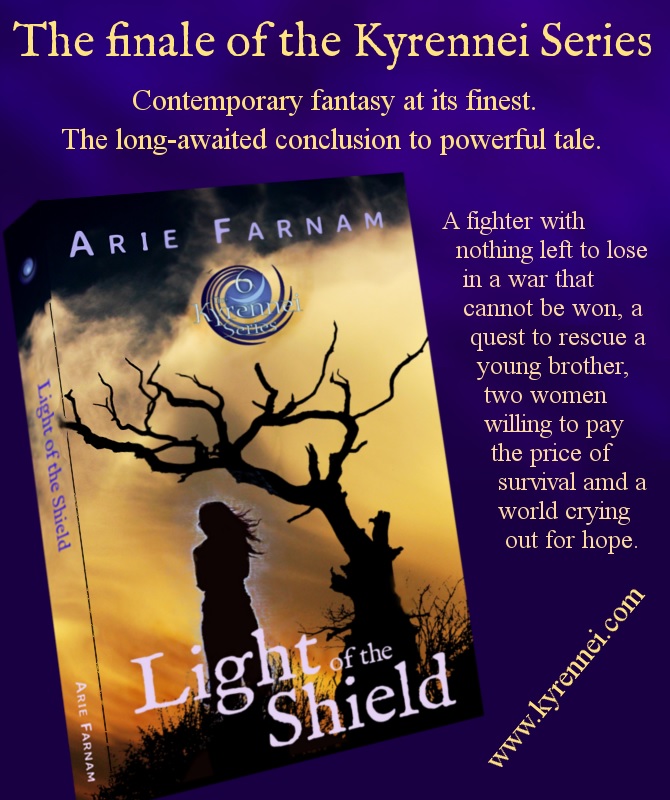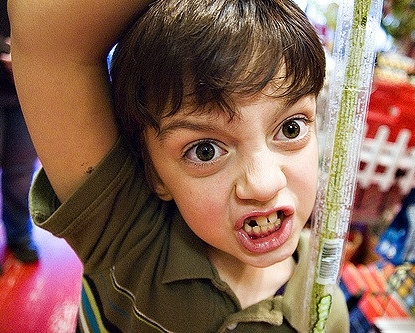Junk food and people who feed it to my kids: Smrak 2
/One day in Oregon, my kindergartner got off the school bus all hyped up with excitement. Her teacher was sweet and my little girl rode the bus with her best friend. It was lovely to see her doing so well.
She told me they had eaten green Jello at the end of the day and she loved it. Then I was worried. She often has adverse reactions to food coloring.
A half an hour later she was shaking all over and screaming desperately, “I can’t stop! I can’t stop!” I held her on my lap, cursing inside. It took three hours before she could stop shaking and sobbing.
"Candy!" - Creative Commons image by Jeff of Flickr.com
When I say my child has allergies to food coloring and preservatives, most other parents sniff and change the subject. It’s like ADHD. Parents supposedly make up food-coloring problems to cover for bad parenting… or so they say. If I protest, they demand a doctor’s note, knowing full well that the medical establishment doesn’t look into this type of issue.
One parent I know does understand though. He has a child with even worse reactions to food additives. His daughter had debilitating eczema as an toddler and they had her tested for allergies but the tests came back negative. Doctors told them it wasn’t allergies and they wanted to proscribe a pharmacy full of random drugs that “might help.” But the parents started to notice a correlation between the child’s problems and packaged food.
After a consultation with a naturopath, they cut out all processed food and all non-organic food from their family diet. They went extreme. They make their own cheese, bread, crackers, cereal, sweets… everything. They buy only organic raw materials. It’s a huge amount of work.
And their daughter is free of eczema.
Scientists know that pesticides, chemicals released from packaging, preservatives, additives and food dyes are not good for us, but they are only a “little bit” not good for us. We can supposedly handle a certain level of toxicity. But some children are like canaries in a coal mine. They fall first, showing us that the concentration of harmful substances is accumulating. Every chemical has it’s maximum safe limit of parts per million, but no one has studied the effect of the maximum “safe” level of a hundred different somewhat toxic chemicals at once.
Add to that the fact that our bodies evolved over millennia in which simple carbohydrates were hard to come by and most people today naturally crave sweets and other simple carbohydrates. Sugar acts on the body much the same way as an addictive drug.
Then we are asked by the modern parenting movement to engage in “child-led feeding” because that is supposedly the “humane” way to parent--leaving children on their own to deal with dozens of unseen toxic chemicals and carbohydrate cravings programmed into their DNA during the Stone Age.
I keep a pretty good kitchen, not spectacular but decent—tortillas, chili, enchiladas, soups galore, spaghetti, curry, lasagna, stir fry, pizza, stew, salads of every description, dumplings, gravy, potatoes, baked fish… And sweets? Famous chocolate cake, pies beyond count, cookies, muffins and even homemade ice cream.
My kids complain of course. They don’t like food that isn’t beige or sweets that don’t come in a shiny package. Like every other kid. But they are used to the fact that I win in the end, so mostly they eat it—while putting their approved least-favorite foods (mushrooms, olives, eggplant) on the edge of their plates.
That is most of the time, when they haven’t recently been at a friend’s house or had a discussion with other kids at school about food. At those times they refuse to eat and then engage in screaming fits when they aren’t allowed desert after not eating dinner.
The situation isn’t any better on the other side of the world where we now live in the Czech Republic than it is in Oregon. I put a lot of effort into obtaining and growing food that isn’t saturated in chemicals. Then my kids go to friends’ houses and return full of chips and candy.
Another reason their friends don’t come to our house: cookies, hot chocolate, homemade ice cream and popcorn are “stupid” and “boring.” Oh, and they “don’t drink water or juice.” Ever. According to the neighborhood kids, the only liquid they consume is pop.
Creative Commons image by Felix M of Flickr.com
I tried volunteering with the school to put together a play day for the kids. They wanted me to run the refreshment stand, which consisted of handing out the Czech equivalent of Twinkies to the kids. I suggested I could bake some brownies, but the others all frowned at me and shook their heads. One of the mothers lectured me, “The whole point is to have snacks that the kids will actually eat. We know they’ll eat these.”
Despite this, many parents do actually talk about healthy food but their most common phrase about food is “just this once” and every day is an exception. Some parents strain the vegetables out of soup before even giving it to their kids. They have given up on any semblance of healthful meals, because that is the only way to avoid conflict.
I’m less judgmental about what others do than you might think, given that I really do care about the health and my daughter has sensitivities to some additives. The thing is that I know how much conflict it causes. Who wants all that conflict in their dinner table?
But here’s my question. Why is there conflict?
Kids will eat vegetables—and quite readily—if they are fresh and appetizing and the child hasn’t been surrounded by unhealthy peer pressure or addictive sugars. I had absolutely no problem with my kids eating until they started attending preschool and seeing more of other kids. Adults were usually astonished at how well they ate even as stubborn toddlers and the fact that they would ask for salad when they had the nibbles.
If kids are told that “vegetables” are overcooked lumps of broccoli and brussles sprouts, of course they won’t want to eat them no matter what their environment. But neither will anyone else.
Even this past week my kids were sure they wouldn’t like beet salad with nuts, kale, tomatoes and feta cheese in it and there were plenty of other good things for them to eat, so we didn’t waste it on them. But after a weekend without anyone pushing junk food, they asked for the beet salad and ate it eagerly. (It really is a treat. Bake the beets in thin strips and add lemon juice, salt, pepper and olive oil. Yum.)
But when addictive foods and junk are too prevalent they will refuse even their favorite meals, like spaghetti. They are still children and it is hard enough for adults to stop and realize what your body really needs. Children are not magically “more in touch.” In fact, amid the frenzy of play and the confusion of learning the social world, the opposite is often true.
My son now likes to say that at least he can have food coloring, because he doesn’t have the same sensitivities as my daughter. I attempt to explain to them both that it isn’t a question of one kid who can have them and another who can’t. It’s harmful to both of them, but one has more immediate reactions.
It’s more difficult when my kids ask why their friends can eat chips and candy for lunch and then have white noodles with ketchup washed down with pop for dinner and they can’t. I don’t like to be negative in front of my kids and I don’t think their friends' parents are “bad” which is how my kids would interpret the full explanation with their childish ideas of absolutes. But in the end I have to tell them that part of the job of being a mother is making sure they are protected from harmful things, even if others don’t do the same.













